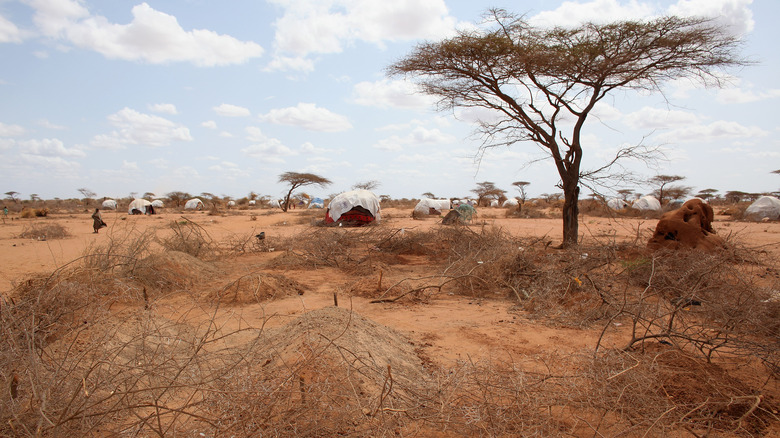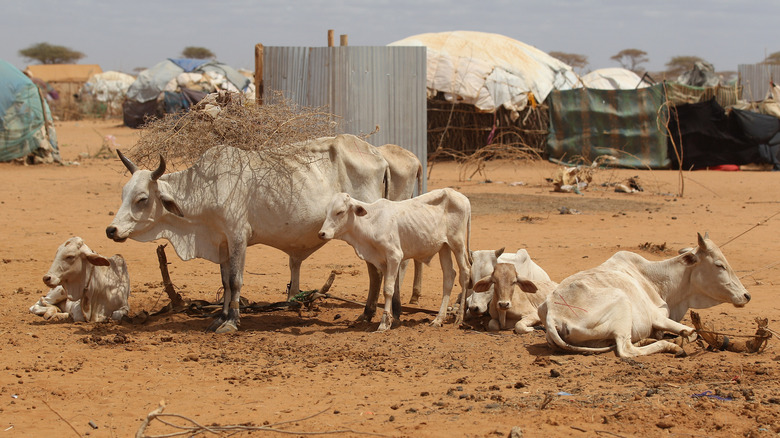Food Insecurity In Kenya Has Risen 43% From 2022
Kenya is known as the "cradle of mankind" because it is home to the world's oldest fossils, and many scientists believe it is the site of the actual birth of humanity. One of the world's most renowned safari destinations, Kenya has become, perhaps even more significantly, vital to East Africa's economic and financial well-being. Although its most abundant natural resources are generally understood to be limestone, soda ash, salt, gemstones, and zinc, foodies such as yourself may think of it first and foremost as the source of some of the world's most remarkably vibrant coffee beans — and given all that makes Kenyan coffee so special, who could blame you?
Sadly however, Kenya, like its East African neighbors, including Ethiopia, Somalia, The Sudan, and South Sudan, is in the throes of an increasingly devastating humanitarian crisis, thanks, in large part, to long-term and seemingly never-ending drought conditions. As a result, by late 2022, the United Nations reported that more than four million of Kenya's residents were in a state of acute food insecurity.
Now, it appears that the situation has worsened. According to a new report by one of the world's leading forecasters of famine, dangerously high levels of acute food insecurity in Kenya have risen by 43% since late last year alone and conditions are expected to grow precipitously worse over the next few months, at a minimum.
Over 5 million Kenyas will face food insecurity in the coming months
Integrated Food Security Phase Classification (IPC), via Relief Web, defines "acute food insecurity" as hunger posing an immediate danger to human lives. Devastating at any level, acute food insecurity is further divided into five phases. The fifth and most extreme is deemed "catastrophic/famine," meaning at least one in five households are facing "extreme" hunger, 30% of children are experiencing acute malnutrition, and two in every 10,000 persons are dying on a daily basis as a result. However, "merely" high levels of acute food insecurity are declared in a region when high levels of acute malnutrition are already observed in the population (i.e., the third phase).
According to a report by IPC published on February 20, 2023, an estimated 4.4 million Kenyan residents are now suffering from high levels of acute food insecurity. This figure represents a 43% increase from the period between October and December 2022. Of those affected, an estimated 774,000 are already considered to be in the fourth, or emergency, phase, at which point people are already beginning to die from malnutrition or complications thereof.
Conditions are only expected to worsen. According to the report, between March and June 2023, another 5.4 million Kenyans will face high levels of food insecurity. Of these, an estimated 1.2 million will be classified at the emergency level. Back in July 2022, USAID made its largest ever pledge to combat child hunger in the region. But it appears that the dire circumstances at hand necessitate further action.

